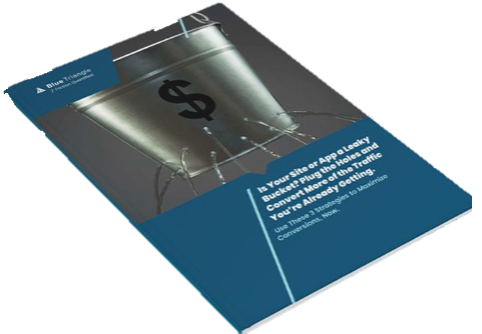Digital Experience Monitoring (DEM): What it is and Why it's important
What is Digital Experience Monitoring and why do I need it?
Digital Experience Monitoring analyzes and monitors the end-user experience with a web application.
As control over user experience has been lost to software abstraction layers like the cloud and sass components, DEM software has increased in importance for business. Due to poor user experience, business groups have noticed declines in sales on their websites and the productivity of their employees on their web applications. As a result, demand has risen for software that can monitor or predict when a change to a web application will impact end-user experience.
What does 'monitoring experience' mean?
DEM software tracks a user’s journey from the user’s perspective. Starting at an endpoint like a user’s device, DEM software drills into the infrastructure of that endpoint, from UI/UX all the way down to the performance of the server.
By monitoring the entire application stack, problems in key pathways such as checkout processes and customer service relations can be detected and resolved without user feedback. This allows business processes to continue to be smooth and user-friendly in an ever changing environment.
For instance, Blue Triangle’s modules all begin at the user-agent level, and our data collection methods allow us to report on user experience data in real-time. We also use advanced data aggregation that allow our analytics to show powerful information about user experience. Through our partners at Riverbed, Blue Triangle uses integrations for monitoring the back end to round out monitoring for a full DEM solution.
What does the data look like?
Key data types monitored by fully-fledged DEM software are real-user data and synthetic data. These data types should be monitored for all end points, including mobile and desktop devices.
Real user data should be obtained organically by a browser plugin or a tag, while synthetics should be collected by various user agents that are representative of real user endpoint devices. These synthetic agents could also use automated scripts to mimic what a real user would do to follow a process within the respective website or web application.
Can DEM software show problems with user experience?
In a word, yes. Digital Experience Monitoring software should detect errors and anomalies in the data it collects, and trend performance and user engagement data over time. Data categorization should also be possible by application piece, geographic location, business units, or any other custom categories.
With enough data, DEM software should be able to predict states of the web application such as increases in usage on certain days or a decrease or increase in sales due to performance of the application.
Another kind of data DEMs should utilize includes screen captures and click-throughs of important processes for UI/ UX development and troubleshooting purposes. These click-throughs should display the most common pathways of the end user as well as highlighting problematic pathways that lead to a poor user experience.
What other features should DEM software include?
The end goal of DEM software is to increase sales or employee productivity by helping Infrastructure and Operations teams improve user experience within an application or website. A large part of being able to do this is detecting problems with the web application before your users do.
To accomplish this, DEM software should have robust reporting and alerting capabilities that alert the right teams, often Infrastructure and Operations teams, to problems in the application. Alerts should not be noisy to the extent that they are meaningless. They should however be actionable from within the application to drill down to the root cause of the problem.
As another example of this, Blue Triangle’s alerts are fully customizable for alerting on key performance indicators, metrics, errors, anomalies, and some other situations that matter to some businesses. We notify via email, SMS, and other integrations that our customers commonly use. We also have user-friendly dashboards linked to the alerts to drill down and find the root cause of poor user experience.
What's the takeaway?
DEM software should be a robust solution that provides visibility into both the back end and front end of an application or website. It should utilize real user data and synthetic data to provide insight into user experience. Not only that, it should have advanced features like anomaly detection, error detection, and alerting capabilities to make problems with digital experience easier to spot.
While Marketing analytics often rely on similar data as DEM, marketing goals like good aesthetics and SEO are usually decoupled from DEM. According to Gartner, DEM software is “primarily responsible for monitoring user experience through interaction.” Blue Triangle’s philosophy is that marketing and performance go together when it comes to user experience, and so we offer insights into Marketing initiatives in our DEM solution in addition to all of the features mentioned above.
Our holistic approach is why Business, Marketing, and Infrastructure and Operations teams alike prefer Blue Triangle as an all-around solution for their Digital Experience Monitoring needs. You can find out more about our solution on our website, but whatever solution you choose, make sure it meets your monitoring needs.

During the holiday rush, every shopper matters
Optimize the customer journey before the eCommerce event of the year.

.jpg)

